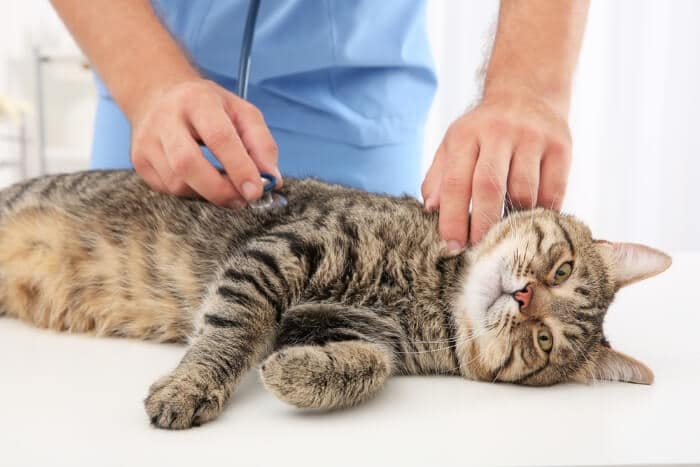
Hyperthyroidism is a very common condition in cats, especially over the age of ten years old.
Quick Overview: Hyperthyroidism in Cats
 Common Symptoms: Normal to increased appetite with weight loss, digestive signs (vomiting and/or diarrhea), signs associated with high blood pressure (restlessness, lethargy, sudden blindness, difficulty walking or using legs, increased drinking and urination, behavioral changes (restlessness, agitation, excess vocalization).
Common Symptoms: Normal to increased appetite with weight loss, digestive signs (vomiting and/or diarrhea), signs associated with high blood pressure (restlessness, lethargy, sudden blindness, difficulty walking or using legs, increased drinking and urination, behavioral changes (restlessness, agitation, excess vocalization).
 Diagnosis: Elevated T4 thyroid level on bloodwork. Some early cases may require confirmation with a free T4 (fT4) level. Blood pressure, full general labwork.
Diagnosis: Elevated T4 thyroid level on bloodwork. Some early cases may require confirmation with a free T4 (fT4) level. Blood pressure, full general labwork.
 Requires Ongoing Medication: Yes
Requires Ongoing Medication: Yes
 Vaccine Available: No
Vaccine Available: No
 Treatment Options: Oral medication (methimazole), prescription diet (Hill's y/d), surgical removal of overactive gland, radioactive iodine treatment (I-131).
Treatment Options: Oral medication (methimazole), prescription diet (Hill's y/d), surgical removal of overactive gland, radioactive iodine treatment (I-131).
 Home Remedies: None
Home Remedies: None
What and Where Are the Thyroid Glands?
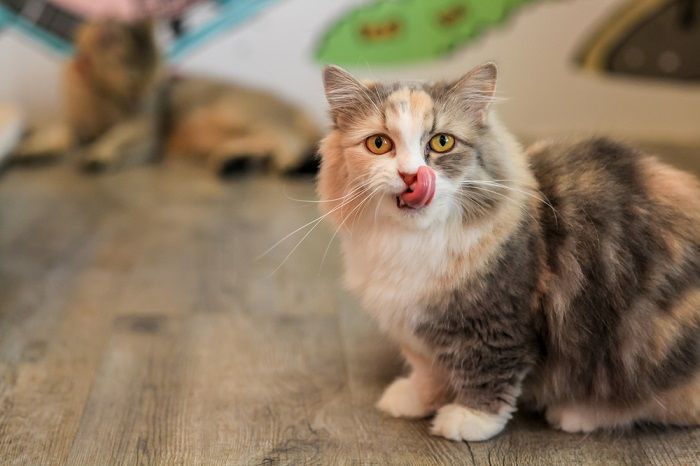
The thyroid glands are small structures, located halfway up the neck in cats, on either side of the windpipe, one on the left and one on the right.
They produce thyroid hormones, which act like the accelerator pedal in a car, giving animals energy and enthusiasm for life.
What Can Go Wrong With the Thyroid Glands?
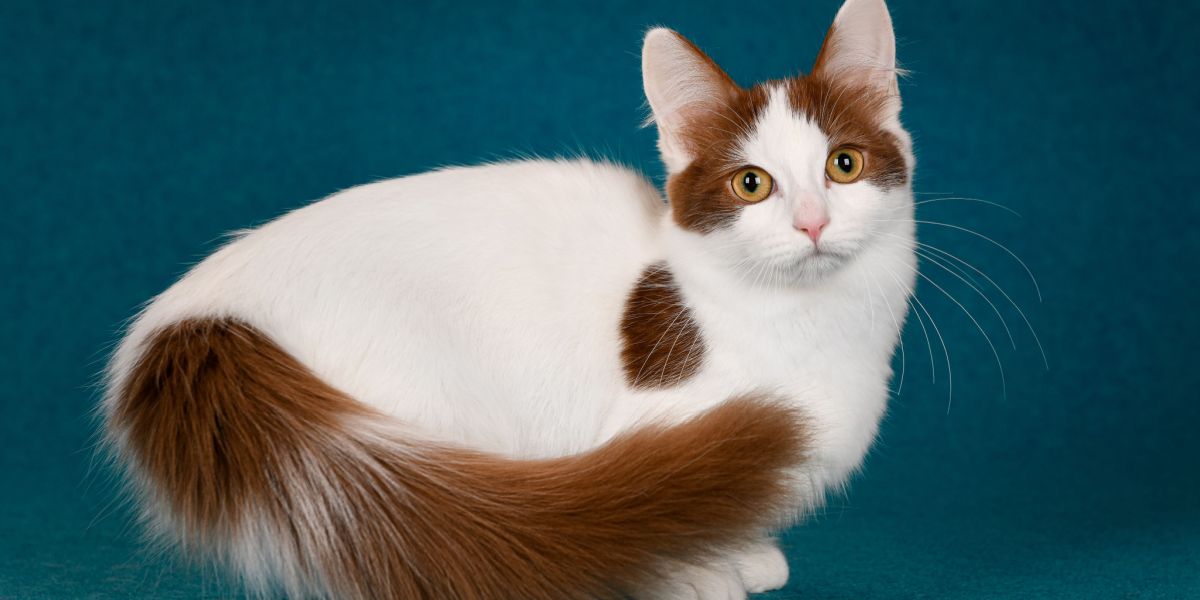
Too much thyroid hormone causes an animal to behave as if their accelerator pedal is permanently pushed down to the floor, while if there isn’t enough thyroid hormone, the animal becomes sleepy, lacking energy and becoming slow and lethargic.
Both of these abnormalities can occur in pets, with overproduction of hormone known as “hyperthyroidismâ€, and under-production called “hypothyroidismâ€.
There’s an interesting difference between dogs and cats: dogs tend to suffer from hypothyroidism while cats suffer from the opposite disease: hyperthyroidism, or an overactive thyroid gland.
What Is Hyperthyroidism in Cats?
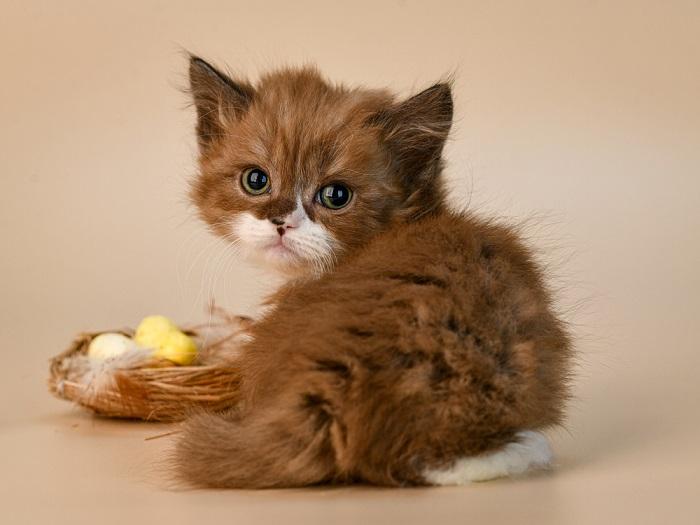
Hyperthyroidism occurs when there is an elevated level of thyroid hormone produced by one or both of the thyroid glands in a cat.
It is an astonishingly common problem in cats: it’s seen more than any other cat hormone problem, and in one recent study of cats over the age of ten being blood sampled, 21% had elevated thyroid hormones. The average age at the time of diagnosis is 13 years.
What Causes Hyperthyroidism in Cats?
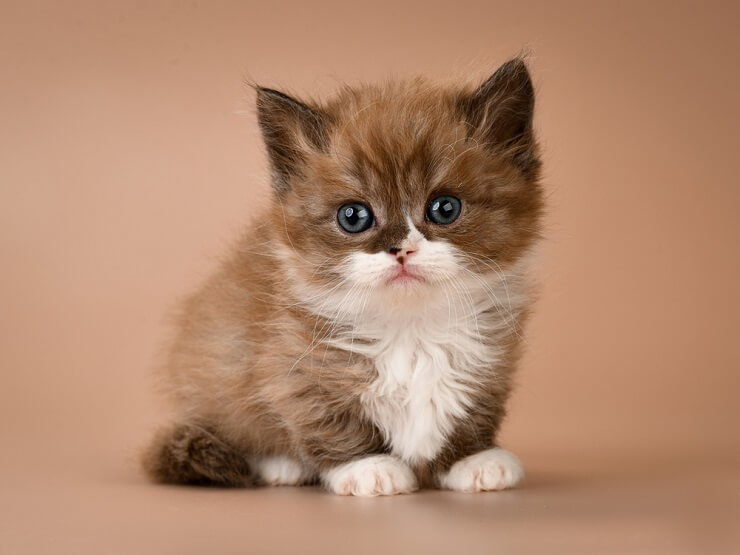
Nobody knows what causes hyperthyroidism, but the following factors have been noted as possible risk factors:
- Use of cat litter.
- Eating a diet consisting of more than 50% canned food.
- Eating a fish-based, canned food diet.
*Flea treatments have been ruled out as a contributing factor
The excessive thyroid hormone is produced by abnormal thyroid tissue: technically, it is described as “functional adenomatous thyroid hyperplasia†or “thyroid adenomasâ€.
In layman’s terms, this is often described as a “benign tumourâ€: it is not malignant or cancerous, and it will not spread to elsewhere in the body.
In around 70% of cases, both thyroid glands are affected, with 30% affecting just one gland only. Malignant cancer of the thyroid gland is rare in cats; it’s known as thyroid carcinoma and it causes only 1-2% of cases of hyperthyroidism.
What Are the Symptoms (Signs) of Hyperthyroidism in Cats?
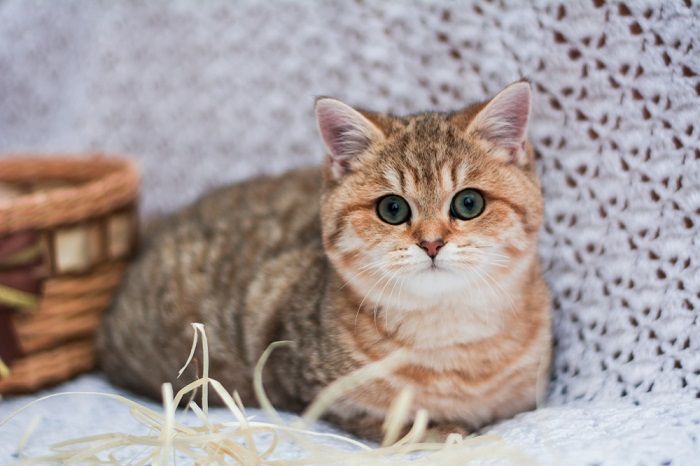
Typically, the signs of hyperthyroidism develop gradually, over a few months. Often the cat carer notices a number of symptoms developing in their pet.
- Changes in the cat’s behavior and habits.
- A formerly placid, easy going cat might become more agitated and more irritable.
- The appetite is often affected, with changes in favorite foods, as well as a significantly increased appetite.
- Increased thirst.
- Increased urination, sometimes with accidents in the house.
- Increased vocalization, with cats howling and yowling more than before.
- Intermittent vomiting.
- The most telltale sign is weight loss despite an increased appetite.
If your cat shows a combination of some of the signs listed above, it’s important to take them to the vet promptly.
Diagnosis of hyperthyroidism is impossible without doing a blood test, and the sooner the diagnosis is made, the sooner treatment will be given, and the sooner your pet will be on the road to being fully healthy again. This is not a disease that will go away by itself, nor will it respond to home remedies of any kind.
The classic picture of a hyperthyroid cat that vets have in mind is an old, bright, thin cat who eats a lot, drinks more than usual and vomits occasionally.
That said, there are some cases that do not show fit this picture,and there are some cats that show these signs but have a normal thyroid gland. This is why it’s so important to have your cat checked by your vet if you are worried about their health in any way.
Can Young Cats Get Hyperthyroidism?
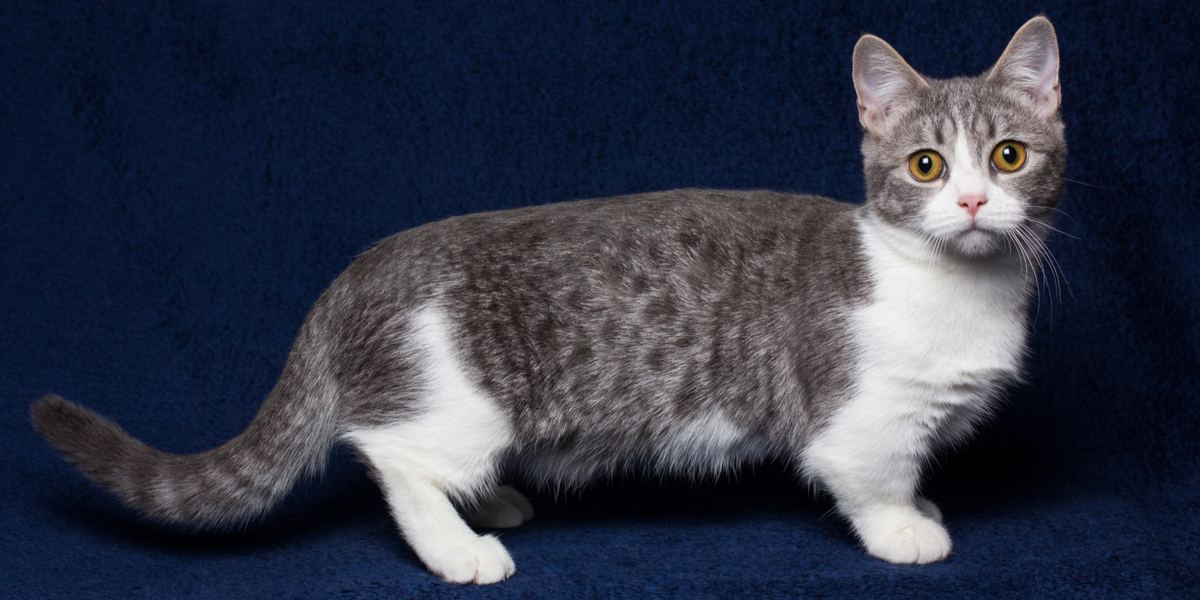
While hyperthyroidism is more common with advancing age, it can be seen in younger cats from time to time, with cases in the literature even describing rare cases of cats under one year of age with hyperthyroidism.
Is Hyperthyroidism Painful?
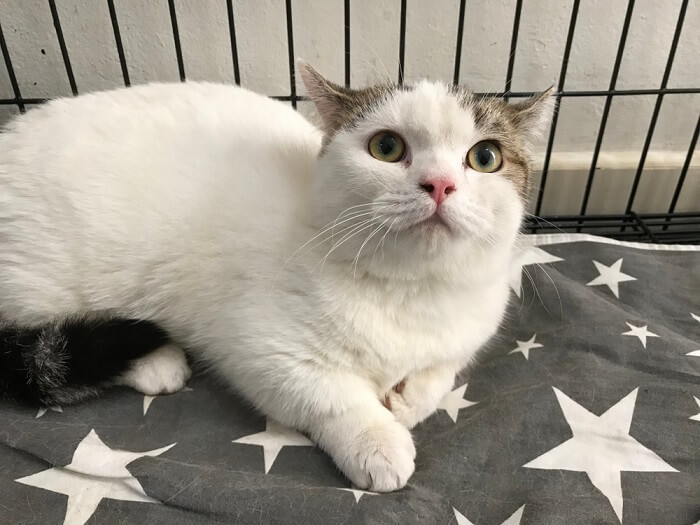
While hyperthyroidism does not cause pain in affected cats, there must be some level of discomfort associated with the signs of a racing heart, irritable nature, and increased hunger that is difficult to satisfy.
If hyperthyroidism is not treated, the signs of illness will get more and more severe, with affected cats eventually becoming emaciated and weakened. There is no need for this to happen: treatment is very effective.
There is no point in trying to help a cat with hyperthyroidism by feeding them more, even if they seem continually hungry. The extra thyroid hormones in their bloodstream will prevent this extra food from being used properly, and they will continue to lose weight regardless of how much you feed them.
What Do Vets Find When They Physically Examine a Cat With Hyperthyroidism?
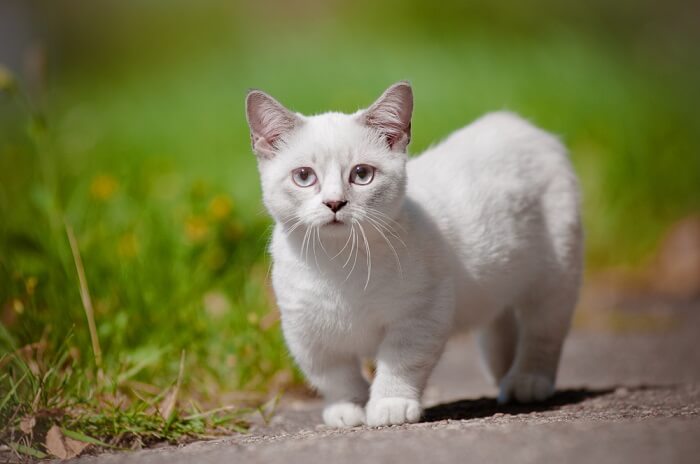
As well as noting that their patient is an older, bright, thin cat, there are three specific signs that vets look out for when examining a suspected case.
- The heart rate is usually raised: typically it might be over 200 per minute, which is much faster than the normal rate of around 150 to 160 beats per minute.
- When the vet listens to the heart, as well as the rapid rate, they may hear a heart murmur, an irregular heart beat, caused by the effect of excessive thyroid hormones on the heart and on the nervous system. In around 20% of cases, affected cats also have high blood pressure.
- The breathing rate may also be faster than normal, at over 30 per minute. The breathing rate is normally between 10 – 25 breaths per minute)
- A small hard bump can often be felt, on the underside of the neck, like a frozen pea beneath the skin, in the location of the thyroid gland. This is the enlarged thyroid gland, and it may be felt on one or both sides. When this is present, it virtually confirms the diagnosis, but it’s still important to follow this up with laboratory tests to be 100% sure.
What Laboratory Tests Are Used To Confirm Hyperthyroidism in Cats?

A blood sample is a key part of confirming the diagnosis of hyperthyroidism. Vets often start by carrying out a so-called “minimum databaseâ€, which means hematology (checking the red and white blood cells) and a biochemistry panel (measuring a range of enzymes and chemicals in the blood stream),
Many affected cats have characteristic blood cell changes, while 90% have elevations of liver enzymes, as well as other biochemical changes. Urine samples may also be recommended to assess kidney function in more detail.
To be definitive about the diagnosis, it’s necessary to measure the thyroid hormones directly: the serum T4 level is nearly always elevated, confirming that the cat is hyperthyroid. For complex reasons, around 10% of hyperthyroid cats have normal T4 levels: these individuals need to have more complex laboratory tests carried out (e.g. “Serum Free T4 Concentrationâ€).
The end result of the laboratory testing phase of these patients is that your cat may now be a confirmed case of hyperthyroidism.
How Is Hyperthyroidism in Cats Treated?

Once the diagnosis of hyperthyroidism has been confirmed, there are here are four main forms of treatment, with the best choice depending on the cat’s individual situation.
Each different treatment choice carries a different price tag, and this will vary from area to area: you should ask your vet for a full treatment estimate at the start, so that you know how much you need to budget for.
Oral medication
The simplest answer is a daily tablet to suppress hormone production. If an owner feels happy giving their cat tablets, then this can be the easiest way. However, it does mean daily tabletting for the entire life of the cat, and there is a small risk that the thyroid tumour could end up becoming malignant, so it’s worth considering the other treatment options.
Dietary Therapy
If a hyperthyroid cat is fed a special diet (e.g. Hills y/d) that has deliberately low levels of iodine (a key component of thyroid hormones) then their thyroid hormone level will return to normal within 4 weeks. However, not all cats enjoy eating this type of diet, and if a cat has access to any other food or water sources (e.g cats that go outside, drink from well water, hunt, etc) then the beneficial effect will not be seen.
Surgical removal of the thyroid gland
Surgery to remove the small thyroid tumour is another possibility. This can be more costly in the short term, but once it has been done, there is no longer a need for daily tablets, so it can make sense as a long term cost effective answer. The surgery can often be done by your local vet with no need for a referral to a specialist center.
Radioactive Iodine treatment.
Generally only offered at selected specialist referral centers, the gold standard for treatment of hyperthyroidism is the use of radioactive iodine: this emits β particles that destroy functional thyroid tissue but do not damage structures in the neck region.
The radioactive isotope is given by intravenous or subcutaneous injection, and treated cats must stay in special isolation quarters for some weeks after therapy because they excrete the radioactive iodine in their urine, and this could present a risk to human health.
More than 90% of cats respond rapidly to this form of treatment. This option is probably the ideal treatment, but it is more costly and more complicated, logistics-wise than other options.
Which Treatment Choice Is Best for My Cat With Hyperthyroidism?
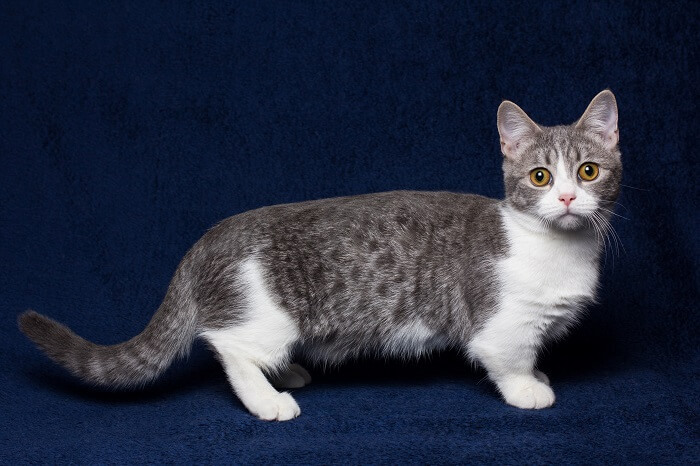
Every cat is different: it’s important to discuss your own pet’s treatment plan with your vet before deciding which one to choose. Most cats respond well to treatment, returning to their usual, relaxed selves within a few weeks.
Is Follow up Treatment and Monitoring Needed?
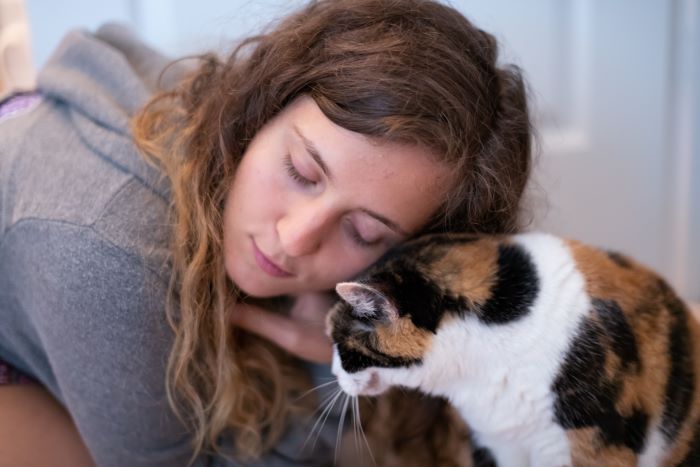
The different types of treatment need different follow up approaches.
Daily medication and an iodine-restricted diet do not provide a permanent cure, so without ongoing therapy, hyperthyroidism will recur. For this reason, it makes sense to carry out intermittent blood tests to confirm that the tablets or diet are still being effective. Your vet will advise you on the recommended frequency, but it could be every 3 – 6 months.
Surgical removal of the thyroid gland and treatment with radioactive iodine are both curative treatments, so there should be no need to have follow up monitoring tests once the initial post-procedure tests have shown that levels have returned to normal.
There is a small risk that treatment for hyperthyroidism might “un-mask†kidney disease that had previously been lurking under the surface, so your vet may recommend tests to monitor kidney parameters if this is considered to be an issue.
Do Cats With Hyperthyroidism Need a Special Diet?
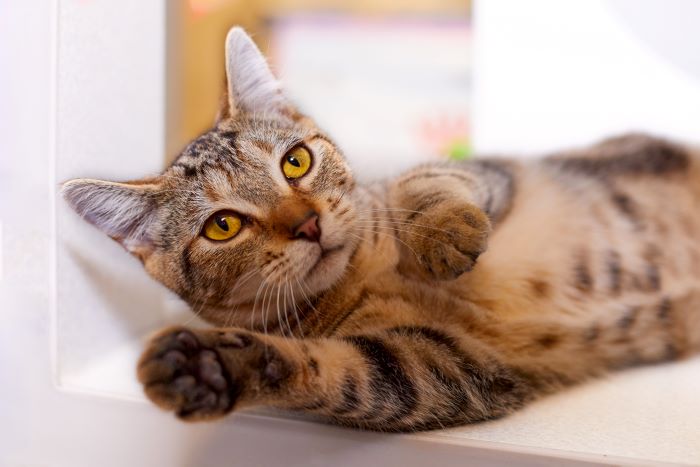
Other than the restricted-iodine diet that is used as a type of treatment, there are no specific diets for cats with hyperthyroidism. Cats that are treated with the other modalities can be fed their usual diets, or as recommended by your vet (e.g. senior diet, etc).
Related Articles:
What Is the Life Expectancy for a Cat With Hyperthyroidism?
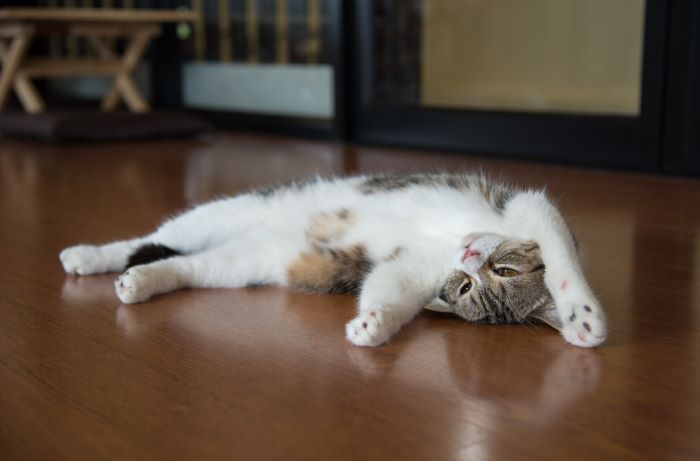
The prognosis for treated cats is good, with an expected life span of eighteen months to two years or more, with around one in three cats still being alive after four years.
The ultimate cause of death is not usually associated with hyperthyroidism: cancers and kidney disease are the most common reasons, and these are common in all elderly cats.
Remember, if you suspect that your cat may have hyperthyroidism, it’s important to get them to the vet promptly so that a proper diagnosis can be made, and a treatment plan put in place. Hyperthyroidism does not get better naturally, and it does not respond to home remedies or alternative approaches. The science is strong on this: for the sake of your cat’s health and longevity, the correct treatment needs to be given, and when this is done, the results are excellent, with affected cats returning to full, normal health.






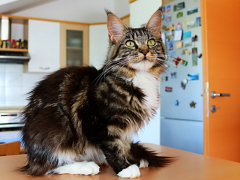
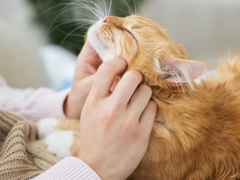
I have a older female cat she is about 13 and a half years old. Up till almost 2 years ago she was doing ok. Then she got a draining cyst under her jaw, the vet saw her twice and drained it once.
They said it was not affecting her breathing etc so I could have it removed or not. So enter Covid and vet restrictions. She was on the List, no one called I called several times and never got through. or was told she is on the list. So finally was able to contact office and they said bring her in, so I did and she had already lost about 6 pounds down from 12-13 pounds. She was not over weight just a lovely full furred lilac Siamese. So then they wanted more and more $$ for the blood work but at this time time, I lost my husband lots of income loss and dollars for the burial etc… She began to lose weight and I thought she was grieving as I was, but she continued to lose weight, honestly I thought she was going to pass and I did not want to take another cat in to be euthanized. I have had over 25 cats since I turned 18 and many were feral and rescue some have lived to 20 and 21 years of age. So I have had older cats. But this one she is special, so now I get injured and someone has been helping feed the cats. This is ok but now I am back up on my feet and see that she is down to under 5 pounds. She eats a lot as you said, she has always been a great water drinker all my cats have, yes to litter mostly inside cat, the last 4 years and she eats, gets up drinks some water, lays down sleeps peacefully slow breathing and then gets up and it starts all over. The cyst seems to be mostly just there now. But she is so thin she eats good and the only food I could get her to eat is BB but I just checked and its probably one of the worst foods I could give her.
I am willing now that I am ok again to take her to the vet, If its too late and she is not in pain I want her to be with those who love her but if there is any chance, she can get better, then I am for that too. She is a bit unsteady on her feet but gets up and down about 8 times a day laying in one basket or another. I know I should have pushed the vet but with my husband passing, I just was not thinking clearly.
One thing my vet always told me, don’t give your cats fish, I made a point not to get any food that showed fish. I then read the small print on the label and it appears all the canned Friskies cat food has a fish meal and other ingredients I did not know were dangerous till I read your post so thank you.
My problem is right now all she will eat is the BB Turkey Pate spoonless singles. I don’t know what to do. She eats the pate and gets it into her nose and then she has a stuffed up nose, so I have to wipe her face each time she eats. She will eat till she makes the pate flat in the dish so I have to go and stir it up to a mound and she will eat again and then come and see me and I need to mound it up again. I really do love my old lady cat Sabrina and I have 3, 3 year old siblings I adopted in 2020 and they are all healthy and doing well.
I am sure its her thyroid but need the blood tests to be sure. She panics every time she sees the carrier so I have not taken her in plus again its trying to get through to the office to set a appointment. Its not walk in any more. I have had 3 major losses in my life in the last year and not sure if I can handle another one.
Any advice or suggestions will be greatly appreciated.
Hi! I apologize for the late reply. You’ve clearly been through a lot of hardship recently, and it’s completely understandable that you’re feeling overwhelmed. How is your cat doing now? When it comes to coaxing her to eat, additives and toppers may be the solution. We have an article on helping a cat gain weight here. Wishing you and Sabrina all the best.
My cat is going on 19 years old. He’s been on methamazole for 4 years. I’m slowly cutting the methamazole in half that’s up to 5mg and introducing Nat Mur (naturum muriaticum) 6x spray, and 30 c pellets.. So far it seems to be working fine. His eyes aren’t dilated. He’s not hyperactive. He’s always been a good eater but it hasn’t increased to ravenous. He doesn’t necessarily urinate more. He has always been a great water drinker. He doesn’t have kidney disease. I’m working on any dental disease with homeopathics as well. I do not want him on methamazole any longer. I’ve supported his liver with milk thistle and aloe vera detox. I’ve also used kidney support homeopathics. My goal is finding the right amount of Nat Mur while I watch him closely for any reaction. Oh my cat went out every day all day. He didn’t use a lot of litter. He ate dry food only until about 14. It was not fished based. What I did do was use tuna to get him to take a prednisone pill. It was hidden in a ball of tuna. That human grade tuna may be the culprit even in small amounts! So far so good for Louie though.
My cat is living proof that hyperthyroidism can be successfully treated with a low-iodine diet. My cat was diagnosed with hyperthyroidism at age 13, after a year and a half of eating a cat food that was “guaranteed” to cause weight loss. Yes, he had lost weight on that stuff, but he’d become very ill, too: he was vomiting several times a day, anxious and yowling all the time, drinking and peeing great volumes of water, was too weak to jump up on a sofa, he even got aggressive with me sometimes. The vet also said his heart rate was dangerously fast, and he was dehydrated despite all the water he drank. I learned later that the weight-loss cat food he’d been eating contained excessive iodine, which likely over-stimulated his thyroid gland and caused thyroid tumors. When the vet told me the treatment options I balked: either surgically remove his thyroid gland and give him thyroid hormone supplements the rest of his life, or give him anti-thyroid medication the rest of his life. Either would require many expensive vet visits to adjust his thyroid hormone levels until he was stable. I said no to both. I decided instead to try to cut iodine out of his diet. As soon as I changed his diet he stopped vomiting, and over the next several months all his other symptoms cleared up. The iodine-restricted diet meant no fish or seafood, no salted human foods because table salt is usually iodized, and no cat food containing iodine supplements in the form of kelp, potassium iodide or calcium iodate. I read all the cat food labels and at first I could not find ANY cat food that didn’t contain either fish or iodine supplements, or both. So I fed him raw poultry and unsalted bone broth. (My reasoning was that cats evolved eating whole animals including bones, and raw meat was only muscle, so I assume bone broth should contain some calcium or whatever is in bones that he needs.) Eventually I found Hill’s prescription low-iodine YD food, and this is mainly what he’s been eating for almost 2 years now. I also give him raw ground chicken or turkey a couple of times a week, and unsalted bone broth every day because he loves it. He’s now 15 — and in perfect health! He recently had blood work done and all his blood levels are normal, including his thyroid hormone level. The vet said she’d never heard of treating hyperthyroidism with diet alone, but said I should keep doing what I’m doing because it’s clearly working.
Please consider that the cause of so much hyperthyroidism in cats may be the iodine supplements in cat foods.
Excellent story. Thank you for sharing your experience.
Ditto! I did the same routine for my adopted cat that had been in shelter for 4 years and never tested for anything except FIV and FELV.
She was diagnosed at my vet with hyperthyroidism. I refuse to put an 11 y.o. stressed cat thru surgery, radio-active therapy and even Hill’s diet food. She is a picky eater and won’t go near dishes by the smell. I have her on no iodine foods, high protein, no fish, no cans — all food in pouches. I also boil chicken and use broth as fill-in treat. I don’t trust raw food. She is missing a lot of teeth on one side and I puree all of her food. I give her small meals during the day. She seems to be a lot better but, hate to take her to regular vet. They don’t agree with my routine. Need to find an holistic vet nearby.
So Marcy what kind of food are you using that doesn’t have Iodine? Can you share with me? I would try that route first as well. My kitties’ numbers are slowly creeping up and I need to stop this in it’s tracks. Thank you so much.
Thank you for this article. It’s very helpful. XXX My cat has been diagnosed with severe hyperthyroidism despite being given the all clear when we were initially concerned 6 months ago… She is 13 and has a seizure type head twitch when she is tired, usually when she is falling asleep. This has been getting worse recently.
She has also been hunkering down and has been coughing like she has a hairball but with nothing happening. The Vet initially said that she had asthma and a chest x-ray was done which found tidy, equal spots on her lungs, indicative of asthma. However as her thyroid as 160 rather than 60, the vet said that all of her symptoms may be related and therefore to treat just the hyperthyroidism in the first instance. It’s too early to be sure but it seems that both of these symptoms have been less of an issue… We were thinking about radioactive treatment for her, but in this article I was shocked to see that the life expectancy of a cat seem to diminish significantly after diagnosis. Do you think that our previous neurological concerns are anything to do with the hyperthyroidism? and Do you think we should be treating her for asthma too? Thank you
Hello Michelle!
Thanks for stopping by and leaving a comment. Your questions are very complex and specific to your cat’s unique history, so it’s very difficult to give a complete answer to these questions. Furthermore, I’m not a vet and this reply is not a substitute for veterinary advice.
That said, here are my thoughts:
First off, your cat’s twitching isn’t necessarily connected to the hyperthyroidism, but a link is possible. Some cats with severe hyperthyroidism do experience muscle twitches or tremors.
It should be possible to treat your cat’s asthma along with hyperthyroidism. Note that some hyperthyroidism medications are contraindicated for cats with asthma. That said, asthma can certainly be exacerbated by hyperthyroidism and, if your vet thinks it would be best to focus on hyperthyroidism alone, that may be a good place to start.
Once treated, cats with hyperthyroidism can live for years—the life expectancy really depends on how long the condition went untreated and how much damage it’s done to the patient’s body. Radioactive iodine is generally considered the most effective treatment and should stop the effects of an overactive thyroid.
I hope this helped you to make a bit more sense of the situation. If you have any more questions, feel free to ask—I’d also recommend further discussing all of these issues with your veterinarian.
Wishing you and your cat all the best,
Mallory